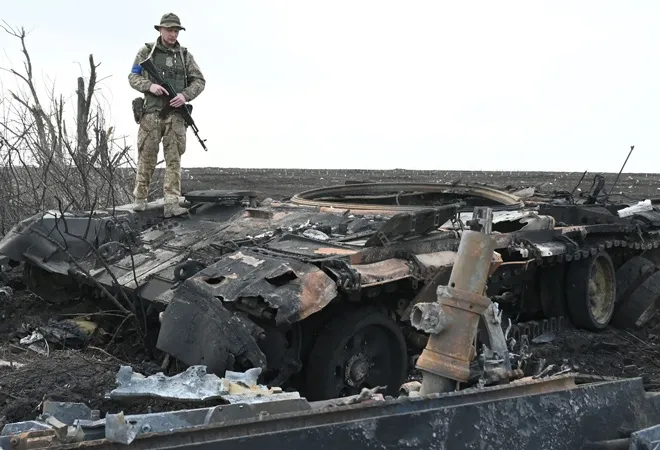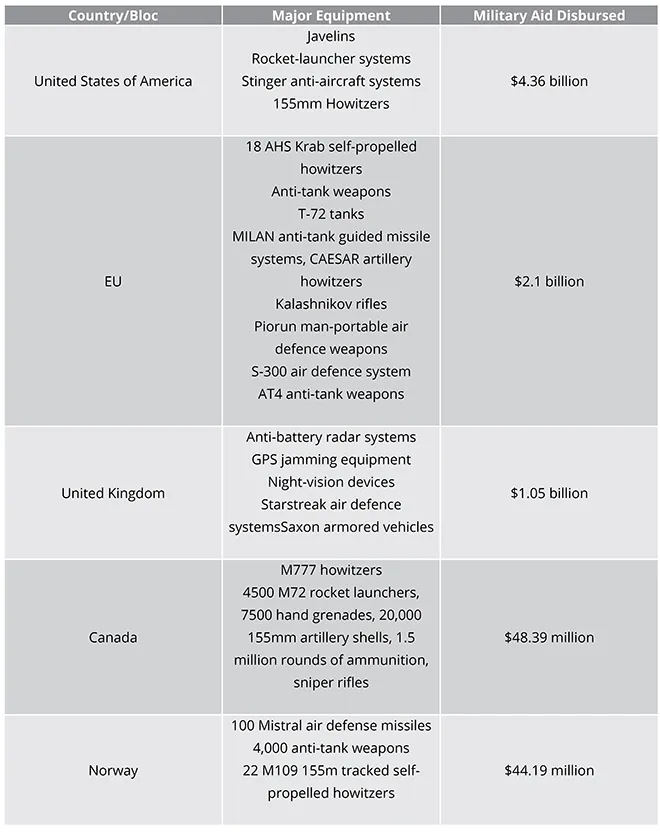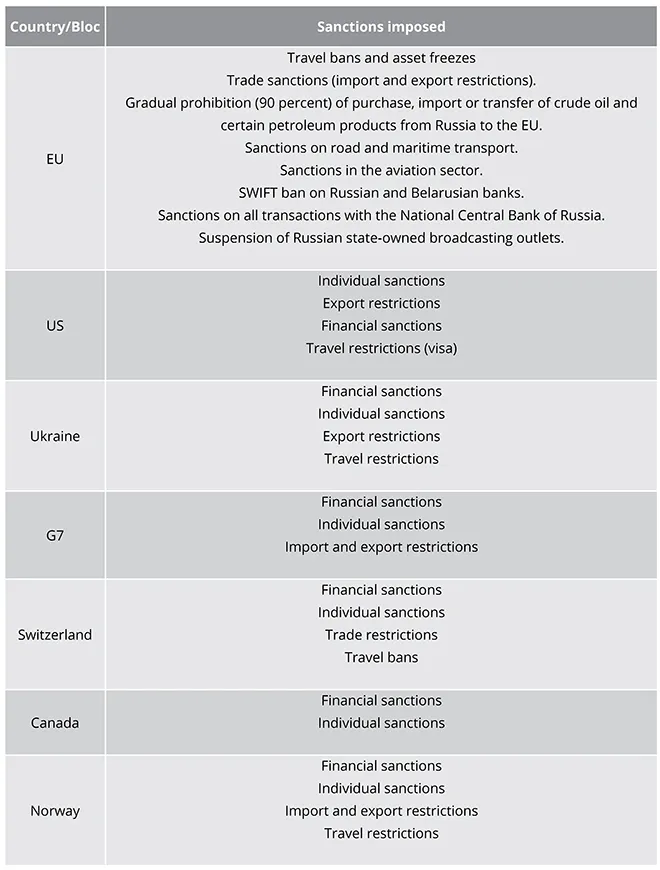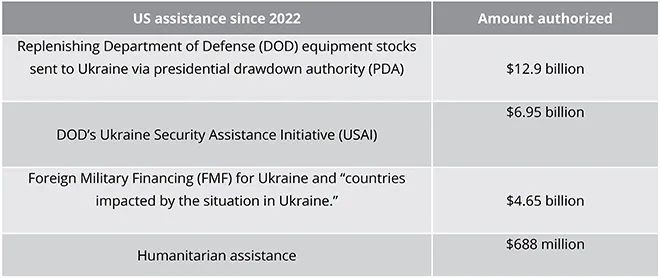
On 1 June, the US Secretary of State, Antony Blinken, released a
press statement providing insight into the slow Russian progress in Ukraine. It read: “In the three months since it launched its unprovoked and brutal further invasion of Ukraine, Russia has consistently failed to meet its strategic objectives.” This victor’s narrative painted by the United States (US) pales when juxtaposed with Ukraine’s desperate call for more arms, the US and its European partners’ limitations in moving arms into Ukraine at the desired speed, and Russia’s ability to sustain the war while gaining ground in the eastern parts of Ukraine. Although Ukraine’s West-assisted defensive posture and economic sanctions substantially thwarted the Russian advance, the latter’s assault in the east
continues unabated. An assessment of the war’s
current trajectory shows that Russia will soon be in control of almost all of eastern Ukraine, with its most recent
claim of taking control of Lysychansk, the last Ukrainian foothold in the Luhansk region. Efforts in deterring Russia have neither helped the war tilt in Ukraine’s favour nor has it meant that Russia has achieved all its strategic objectives in Ukraine. However, given the long-haul, Russian advances in the Donbas region and potentially its ability to cut off Ukraine’s access to the sea have not just depicted the limits in deterring Russia but more conspicuously it has put the credibility of western assistance to Ukraine on the line.
Much of what has come out from the battlefields between Russia and Ukraine for close to four months have played out at the levels of perception and information. Russia’s inability to capture Kyiv and its retreat from western parts of Ukraine may have been as much a spin of information as the portrayal of Russia as a 20th-century infantry-reliant force which was sitting ducks for the Ukrainian TB2 Bayraktar drones. As such, the gap between developments on the ground and their portrayal has been as stark in the case of Ukrainian defence capabilities, as also in the case of Russian offensive capabilities. Despite the Russian defence having been
characterised as a combination of “poor low-level tactics, limited air cover, a lack of flexibility, and a command approach which is prepared to reinforce failure,” Russia’s gains in eastern Ukraine may have proved that quantity may be a quality of its nature.
Efforts in deterring Russia have neither helped the war tilt in Ukraine’s favour nor has it meant that Russia has achieved all its strategic objectives in Ukraine.
In the past four months, the West has overwhelmingly come to Ukraine’s aid against Russia. In light of the developing postures from both sides over the Russia–Ukraine war, a few questions gain importance: What has been the nature of western assistance to Ukraine and whether it has been sufficient? How has it impacted the Russian response? How has continued western assistance to Ukraine reshaped the trans-Atlantic alliance?
As the war in Ukraine enters its fourth month, there are pressing questions about the benefits that western aid may have brought to Ukraine? At best, western aid has prevented a take-over of Kyiv and restricted Russia to the eastern parts of Ukraine; at its worst, western aid has been blamed for egging Ukraine on to continue the war with Russia at tremendous costs to its economy, people, and its future. The West has followed a strategy of mixed approach straddling economic sanctions against Russia and providing
aid to Ukraine. Although the total aid promised to Ukraine by the most important donors now stands at more than 30 billion euros in budget support, only about 6 billion euros has been handed out since February 2022. The largest donor in aiding Ukraine is the US, followed by the European Union (EU). However, when the support by countries is put in a comparative framework to their economic size, the Baltic states and Poland continue to contribute significantly more than large European economies such as Germany, Italy, and France. The following table broadly depicts western assistance to Ukraine since the start of the war.
Major Western Military Assistance to Ukraine
 Source: Forum on the Arms Trade, The Washington Journal
Source: Forum on the Arms Trade, The Washington Journal
Meanwhile, the sanctions imposed against Russia by the West are listed in the table below:
Nature of western sanctions against Russia
 Source: Peterson Institute of Economics, Al Jazeera
Source: Peterson Institute of Economics, Al Jazeera
The effectiveness of western sanctions remains blunted
The West has tried to create necessary deterrence to stop Russia by working on an institutional response that brings together sanctions against Russia and material and financial assistance to Ukraine. Neither has proved sufficient to stop Russia in the short term. Any severe long-term impact of western sanctions on Russia remains to be seen.
Some estimates are being made about the long-term impact of sanctions on Russia. Meanwhile, the EU has been an indirect deterrent to Russian advances in Ukraine. A consequential portion of Russian trade happens within Europe; implementing financial sanctions against Russian trade and businessmen has
significantly hit Russia’s economy. As Matina Stevis-Gridneff noted in an
article in May this year, the latest blow to the Kremlin economy was the EU’s adoption of its sixth economic sanctions package inclusive of the long-delayed Russian oil embargo. The package’s adoption suggests that by the end of 2022, the EU would block Russian oil imports by sea. Despite Hungary’s exemption from the embargo, this remains a costly step for both Europe and Russia. Once the embargo comes into effect, the EU is set to witness steeper energy prices while the Russian economy will march into further decline.
A consequential portion of Russian trade happens within Europe; implementing financial sanctions against Russian trade and businessmen has significantly hit Russia’s economy.
Apart from the political support provided by NATO, the practical assistance it offered has been feasible via the
Comprehensive Assistance Package (CAP) that was part of the 2016 Warsaw Summit. The CAP has been key in delivering Ukraine with the best practices on security and defence reforms based on Euro-Atlantic principles. The Warsaw Pact nations which are now a part of NATO have also contributed ammunition and spares. Meanwhile, there have been widespread calls to arm Ukraine with NATO-standard equipment. Despite NATO holding a major role in aiding Ukraine, it is crucial to note that NATO is a
defensive alliance and its intentions lie in preventing the conflict and not escalating it further.
The Biden administration, in the meantime, has managed to militarily aid Ukraine while imposing hurtful sanctions against Russia. The
US approval of the request for long-range multiple-launch rocket systems was a major contribution to the US’ effort to militarily aid Ukraine. However, this was granted after the Pentagon received assurances that the systems would not be directed toward Russian territory. President Putin had warned that such an event would be tantamount to “crossing a red line” for the West.
The rocket systems are part of the
US’ 11th security aid package for Ukraine, valued at US $700 million. Including their
latest addition, the total US military assistance to Ukraine since the start of the war accounts for the staggering US $5.6 billion (15 June 2022). Separately, on 21 May, Congress approved an Additional Ukraine Supplemental Appropriations Act of 2022 allowing for more than US $40 billion in new funding for the US response to the crisis. Concerns regarding sustained congressional approval were wiped away with this act that ensures continued military assistance.
US assistance to Ukraine
 Source: US Department of Defense, Congressional Research Service
Source: US Department of Defense, Congressional Research Service
Trans-atlantic convergences
The West has united in its effort to bolster Ukraine against Russian aggression. However, these provisions are
rapidly depleting indicating the growing need for strengthened resupply efforts. Some of the
new systems provided by the US include over 1,400 Stinger anti-aircraft systems, 700 Switchblade Tactical Unmanned Aerial Systems, 108 155mm Howitzers and over 220,000 155mm artillery rounds, 121 Phoenix Ghost Tactical Unmanned Aerial Systems. Several of these systems require Ukrainian personnel to be trained by the US. At the outset of the invasion, the
US’ training mission to Ukraine—the Joint Multinational Training Group-Ukraine—was suspended. However, it resumed activities in April 2022 after the DOD announced its decision to train Ukrainian personnel outside Ukraine to operate the US and allied systems. Meanwhile, the
European endeavour to provide Ukraine with weaponry, arms, as well as ammunition has been steadfast. Poland and the Baltic states have been extremely accommodating with their territory; providing land for stationing NATO troops and as corridors for fleeing refugees. Building on these efforts, a concerted European attempt has been witnessed via the acceptance of Ukrainian refugees into the mainland.
The Russian invasion of Ukraine is, without a doubt, threatening Euro-Atlantic security. Nevertheless, this threat has also strengthened transatlantic unity. Russia had justified its invasion of Ukraine as being a response to NATO’s attempts at enlargement. However, four months into the war, its efforts at halting the alliance’s enlargement faced a major setback with historically neutral countries like Denmark, Finland, and Sweden
applying for NATO membership and Ukraine obtaining a ‘candidate’ status for joining the EU. During the initial days of the invasion, transatlantic consolidation was seen as a preparatory ground for a counteroffensive. However, recent trends indicate Western support to have transitioned from an offensive to a defensive position, seeking peace over “territorial integrity and sovereignty”. Eventually, re-establishing stability remains the utmost concern for the global order.
Poland and the Baltic states have been extremely accommodating with their territory; providing land for stationing NATO troops and as corridors for fleeing refugees.
Despite the convergence between trans-Atlantic partners, bringing Russia and Ukraine to the diplomatic table has not been possible. On the contrary, the war may lead to an arms race. Equipping Ukraine with weapons essentially implies engaging in that very race. The war’s
humanitarian cost has been heavy: 15,000 deaths, 6 million refugees, 7.7 million internal displacements, widespread unemployment, and at least US $100 billion in infrastructural damage. While a Ukrainian victory is not the need of the moment, a Russian victory will aggravate the crisis. The West has to equip Ukraine with a sustained security assistance plan to ward off potential Russian advances into Ukrainian territory.
Conclusion
The war is expected to be a long-drawn one. The growing humanitarian crisis and the looming global food crisis indicate that the credibility of western assistance to Ukraine is at stake. Even if the war did stop, Russia has captured essentially most of the Donbas region. This gives Moscow a strategic victory enabling it to create regional instability via protracted civil and proxy wars. Even the materialisation of ceasefire talks would occur only based on the existing terms of territorial gains and losses. Some inbuilt caveats have blunted the effectiveness of western aid to Ukraine. If for Europe, its dependence on Russian energy has blunted the impact of sanctions, the US’ compulsion to avoid an escalatory risk cycle with Russia directly has dulled its assistance to Ukraine.
The views expressed above belong to the author(s). ORF research and analyses now available on Telegram! Click here to access our curated content — blogs, longforms and interviews.



 On 1 June, the US Secretary of State, Antony Blinken, released a
On 1 June, the US Secretary of State, Antony Blinken, released a 


 PREV
PREV


